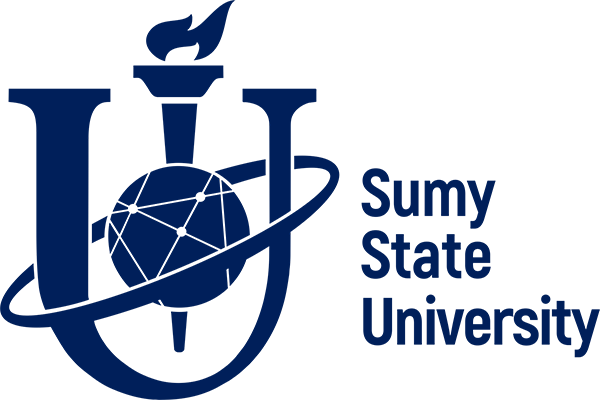MISSION AND VISION IN THE LANGUAGE OF SUSTAINABLE BRANDS: SOCIOLINGUISTIC ISSUES
Keywords:
mission statement, vision statement, brand, brand language, sustainability, social impactAbstract
The article presents the result of the linguistic analyses of sustainable brands’ mission and vision. The mission must be emotional to create a sense of faith in the brand in the target audience and encourage it to decision-making. It is important to correctly use linguistic tools to create certain emotions and reflect sustainable brands’ values. Sustainable development according to the United Nations is the organizing principle for meeting human development goals while at the same time, sustaining the ability of natural systems to provide the natural resources and ecosystem services upon which the economy and society depend. There are three dimensions of sustainability: economic, social, and environmental, recognizing that these dimensions are interrelated and interdependent. The Sustainable developmental goals (SDGs) consist of seventeen universal transformative goals. In the execution of the SDGs, the role of language is also eminent. The brand is a participant in the communicative process being a sender that transmits the information to a recipient (consumer). The way a brand communicates with its audience is the brand language – a set of verbal and non-verbal tools. The mission statement, being a brand language element, is a clear, concise, and sustainable statement about the reasons for the existence of the brand today. Sustainable brands are brands that undertake sustainable practices in the workings of their business and champion them. They then use brand communication tools to convey these benefits to their end consumer hence enabling them to make conscious decisions while being associated with or buying from that brand. Sustainable brands may use a mission statement to communicate their sustainability approaches. Thus, a mission statement being an emotionally influential communication tool is powerful in achieving sustainable development goals.References
Гаман І. А., Корженевська К. С. Вербалізація екобезпеки на німецькомовних сайтах косметичних брендів: перекладацький аспект. Вчені записки ТНУ імені В. І. Вернадського. Серія: Філологія. Журналістика. 2022. Том 33 (72) № 3. С. 176–180.
Ущаповська І. В. Структурно-семантичні, соціолінгвальні та прагматичні параметри мови бренду: мультимодальний підхід (на матеріалі англомовних брендів кави): дис. … канд. філол. наук: 10.02.04. Запоріжжя, 2020. 258 с.
Braun S., Wesche J., Frey D., Weisweiler S. Effectiveness of mission statements in organizations: A review. Journal of Management & Organization. 2012. Vol. 18(4). P. 430–444.
Carvenale M., Luna D., Lerman D. Brand linguistics: A theory-driven framework for the study of language in branding. International Journal of Research in Marketing. 2017. Vol. 34 (2). P. 572–591.
Collins English dictionary / Editors: J. Crozier, A. Grandison, C. McKeown, E. Summers, P. Weber. Glasgow : Harper Collins Publishers, 2008. 1040 p.
Danciu V. “Successful Green Branding, a New Shift in Brand Strategy: Why and how it works”, The Romanian Economic Journal, 2015. Vol. 56, pp. 47–64.
David F. R. Strategic management: concepts and cases. 13th ed. New Jersey : Pearson Education, Inc. 2007. 694 p.
Drucker P. F. Management: Tasks, Responsibilities, and Practices. New York: Truman Talley Books. E.P. Dutton. 1986. 553 p.
Ehala M. Principles of language sustainability. Estonian Approaches to Culture Theory; Lang, V., Kull, K., Eds. 2013. P. 88–106.
Ezeh N. G. The role of language in achieving the world’s sustainable development goals (SDGs). European Journal of English Language and Literature Studies, 2020. Vol.8, No.6, P.53-61.
Fox R., Fox J. Organizational discourse: a language-ideology-power perspective. Westport, Conn.: Praeger. 2004. 240 p.
Grubor A., & Milovanov O. Sustainable Branding. ENTRENOVA – ENTerprise REsearch InNOVAtion, 2(1), 2016. P. 329–336. URL: https://hrcak.srce.hr/ojs/index.php/entrenova/article/view/14232 (Last accessed 09.12.2022)
Grubor A., & Milovanov O. Brand strategies in the era of sustainability. Interdisciplinary Description of Complex Systems, 2017. 15(1), P. 78–88.
Harding-Esch P. Languages and the Sustainable Development Goals after Covid-19. Language and the Sustainable Development Goals: Selected proceedings of the 12th Language and Development Conference, Dakar, Senegal. 2017. P. 7-15.
Hoey M. The discourse colony: A preliminary study of a neglected discourse type. Talking about Text – Studies Presented to David Brazil on his Retirement (Discourse Analysis Monographs 13). M. Coulthard (Ed.). Birmingham: ELR/University of Birmingham. 1986. P. 1–26.
Horwath R. Discovering Purpose: Developing Mission, Vision & Values. Strategic Thinking Institute. 2005. P. 1–9. URL: https://www.strategyskills.com/Articles/Documents/Discovering_Purpose_STI.pdf (Last accessed: 09.12.2022)
International dictionary of Marketing / editor D. Yadin. London: Kogan Page Ltd, 2002. 442 p.
Lynch J., de Chernatony L. The power of emotion: Brand communication in business-to-business markets“, Journal of Brand Management, 2004. Vol. 11 No. 5. P. 403–419.
Mamet P. Slogan as a Corporate Mission Statement. W: D. Gabryś-Barker, J. Mydla (red.), “English studies at the University of Silesia: forty years on". Katowice: Wydawnictwo Uniwersytetu Śląskiego. 2013. P. 97–105.
Mamet P. Language and corporate management: a comparison of mission statements of polish and US universities. Prace Naukowe Akademii im. Jana Długosza w Częstochowie. Studia Neofilologiczne. 10. 2014. P. 187–205.
Nunberg G. The Years of Talking Dangerously. New York: Public affairs. 2009. 288 р.
Paetz F. Recommendations for Sustainable Brand Personalities: An Empirical Study. Sustainability 2021, 13(9), 4747.
Ploof M. The Language of Sustainability. Student Showcase. 17. 2016. URL: https://scholarworks.umass.edu/sustainableumass_studentshowcase/17 (Last accessed: 09.12.2022)
Rathbun G. Silenced by a Mission Statement: An Organization’s Cloak of Ambiguity. Human Communication. A Publication of the Pacific and Asian Communication Association. 2007. Vol. 10, No. 4, P. 547–556.
Report of the World Commission on Environment and Development: Our Common Future (United Nations World Commission on Environment and Development, 1987), www.un-documents.net/our-common-future.pdf
Sprinkel O. What is a sustainable brand? URL: https://sustainablebrands.wordpress.com/2010/12/26/what-is-a-sustainable-brand/ (Last accessed 09.12.2022)
Swales J., Rogers P. S. Discourse and t–he projection of corporate culture: the mission statement. Discourse & Society. 1995. P. 223–242.
Toppo N., Rahman M. The Role of Language in Sustainable Development: Multilingualism and Language literacy in India. PROBLEMY EKOROZWOJU – PROBLEMS OF SUSTAINABLE DEVELOPMENT. 2020. vol. 15, no 1, P. 89–93
Ushchapovska I. V. Convergence of brand language elements. Filolohichni traktaty. Sumy, 2017. Vol. 9. № 1. P. 115–121.














